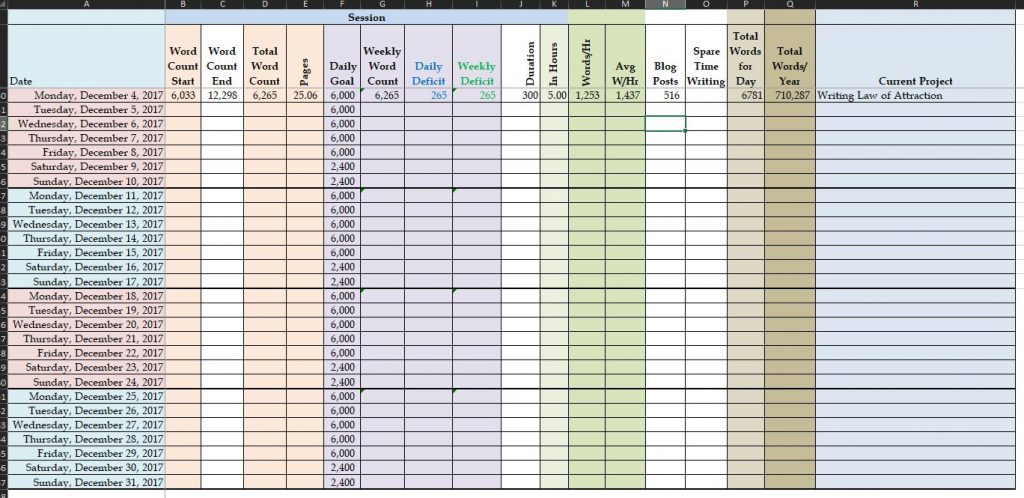I can’t begin this productivity experiment in earnest until after Christmas, because I was gung-ho and recklessly promised (to myself) to handmake as many Christmas gifts this year as possible.
I’m on track to a 90% success rate, but the downside of artisanal gifts is that they take time.
In other words, all my spare time outside my day-job.
(How many reckless promises to yourself or others are stripping away your writing time? Perhaps think twice, thrice or five times before promising, next time.)
However, I am still writing full time hours, so I can set up the weekly log today, in readiness for the post-Christmas period — although Christmas is one of those times of year where family tends to get a far higher priority than pretty much everything else, so time off is not completely off the cards yet.
Let me introduce you to my Word Count spreadsheet.

Yikes, that looks small! Right click and open in a new tab to get it to full screen size, so you can read it. If you’re on a hand-held, it might still be too small. We’ll see.
Because I’m starting this experiment today, there’s only yesterday’s word count on it. Next week, the week will be filled in.
Actually, even yesterday is not completely finished because I’m writing this post yesterday, and the post’s word count needs to be added to it (the count that is already there is for a different post).
All the columns that are not white are pre-calculated. That is, they have formulas in them. When the end word count for the day is added to column C, many of the formula results also appear. When the time spent (in minutes) is added to column J, the remainder of the formulas appear.
The Word Count template I offer to newsletter subscribers is very similar. I’ve tried to remove any need for editing formulas, so the deficit columns have been removed, as they’re the fussiest to maintain properly.
Otherwise the template looks very much like my working copy.
I was hoping to hit 1M words this year, as I did last year, but in October I was handed what Dean Wesley Smith and Kristine Kathryn Rusch like to call a “life roll” – my husband was in a serious car accident, and writing was sidelined for a while. This is one of the best reasons I know for working well ahead of your own deadlines. It’s built in sick-leave, and for full time writers, the only paid leave there is.
All the averages calculate across the life of the spreadsheet, which is one calendar year.
Next week, I will show you the completed sheet with (I hope!) all seven days filled in and robust numbers on display.
In the meantime, if you’d like a copy of the blank, working Excel spreadsheet, click here.
Until then…back to work for all of us.
